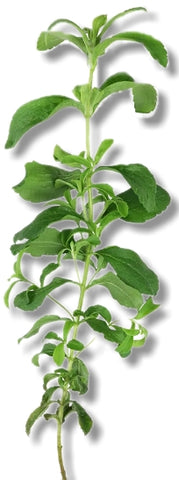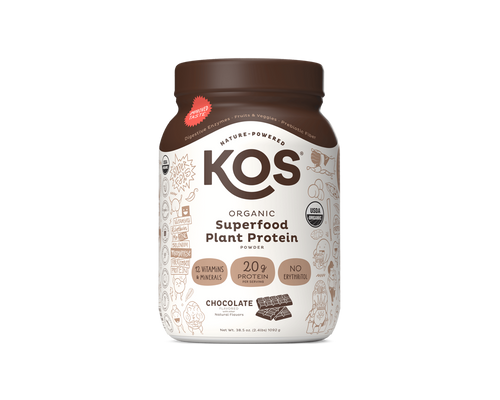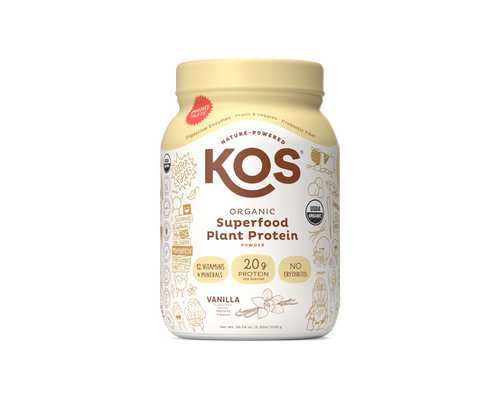Table of Contents
![]()
Stevia. Everyone is talking about it — well … a fair number of people, anyway. What the hell is it? And what's with the anarchist talk?
Stevia is an incredibly potent, zero-calorie natural sweetener made from the leaf of the Stevia Rebaudiana plant; a South America herbaceous shrub that, it must be said, is not much to look at. But what stevia lacks in Aesthetic Wow© it more than makes up for in its controlled explosion of calorie-free natural sweetness.
That it makes things yummy and is associated with 19th century backroom anarchist philosophy makes it a revolutionary sweetener. So to speak.

Oh, and stevia’s mitigating effects on glucose homeostasis has researchers grinning like kids in a candy store as they continue to avidly explore—and contribute to—stevia's catalog of health-supporting properties. Yeah -- this is another of Mother Nature's funky little party favors; a leaf that is changing the world.
Stevioside and Rebaudioside Ask Table Sugar To Step Aside
Stevia’s two main compounds are Stevioside and Rebaudioside — non-nutritive glycocides 200 - 400 times sweeter than table sugar. That is, a little Stevia goes a very long way: making it notably efficient to produce in this era of conscious resource-stretching. And if you shout its name in a crowded space, people named Steve will turn their heads. How many other sweeteners can make that claim? Another value-add.
Stevia’s Discovery: A Besotted Swiss Anarchist in Paraguay
Like much of the plant kingdom western science is only now excitedly beginning to explore, stevia had been in use as a traditional medicinal herb for thousands of years—principally in Paraguay and Brazil—when stevia and western science politely collided in 1901.

That year, the Director of the College of Agronomy in Ascuncion, Paraguay received a gift of Stevia from some indigenous friends.
Like any over-eager Director of a College of Agronomy, Swiss emigre Dr. Moises Bertoni graciously accepted the gift, politely bade his guests farewell, then sprinted to his lab to begin digging into stevia's secrets.
What Dr. Bertoni found in stevia's chemistry began a parade of discovery that is still running full tilt today. This nondescript little leaf is packed with surprises.
When at last the good doctor dazedly emerged from his lab—wearing a broad grin and rumpled chemist's smock (we may freely imagine)—he decided to name the plant after his pal, chemist Dr. Ovid Rebaudi. Stevia's formal name? Stevia Rebaudiana.
Anarchist with a Sweet Tooth
Bertoni—a trained biochemist, natural scientist, and future icon of environmentalism—had emigrated to Buenos Aires, Argentina from his native Switzerland in 1884; his wife, their five kids, his mother, and about 40 Swiss farmers in tow. These would be the founders of Bertoni's new society.
New society? Weren't we talking about a world-changing sweetener, or something in that approximate category?
Yes. And we'll get back to stevia. There are sources who claim Bertoni's main objective was establishment of a socialist agrarian utopia in the jungles of South America. These sources cite a young Bertoni's excited conversations in Switzerland with prominent anarchists of that time Piotr Alekséyevich Kropotkin and Elisée Reclus.
That is, his true intention was to haul 40 skilled acolytes from the comparative comfort of 19th century Europe to a place whose insects grow to the size of small dogs, and where you couldn't walk 3 feet through the vegetation without swinging a machete.
The Letter
In 1882 Bertoni wrote a letter to his wife that was quite scathing in its takedown of polite society, a letter which is generally positioned as Bertoni's rhapsodic waxing about their common dissatisfaction with comfy Switzerland and their shared dream of leaving Europe. "Yes, my dear Eugenia; we shall depart. We shall despise this society that mocks our humanitarian beliefs. You know how I want to live my dreams of travel and exploration!"
His actual pronouncements in said letter run a little hotter, and feature statements like "..we will disdain a ___ society that only bombs will know how to cure; a society that from the bed in which it ___ lies mocks our humanitarian 'superstition', and that offers its filthy bread at the price of brutalization."
In the category "Grown Men Who Devote Their Lives to Sweets", you wouldn't confuse Bertoni with Willy Wonka.
An Explorer and the Unexplored
In any case, Bertoni's desires did not remain dreams for long. To this eager biochemist, nature-lover, and societal utopian, South America in 1884 was Life Sciences/New Beginings ground zero.
Its jungles, mountains, micro-climes, and what would become a continual sun-drenched discovery of theretofore unknown plant and animal species indeed made the place a paradise for Bertoni -- the insatiably curious science guy.

Iguaçu Falls, Misiones Province, Argentina. Photo © Enaldo Valadares
On the group's arrival, the Argentine government had given Bertoni and his gang permission to establish a homestead on the banks of the Paraná River in the wildly gorgeous Misiones province of Argentina.
Bertoni, his family, and the Swiss farmers established a little colony there, where Bertoni began his studies of agriculture, zoology, botany, and anthropology—while the commercial crops grown on the 5-square-mile property supported Bertoni's research -- and what he hoped would be a permanent socialist colony in the middle of all this untamed natural beauty.

Alas, the brutality of the nature itself (however beautiful), run-ins with bandits, and trouble with the understandably angry indigenous peoples put a damper on the utopian fun, and Bertoni's chosen 40 began to decouple from his project.
So it was that his utopian/socialist ambitions morphed into the purely scientific enterprise that ultimately yielded stevia.
One day, Bertoni inadvertently wandered across the border into Paraguay, and the die was cast. Bertoni was so smitten he established his homestead there in Paraguay, receiving from that government a 12,500-hectare land grant.
Bertoni named his new home and research center Colonia Guilllermo Tell, after Swiss national hero and anti-royalist *William Tell.

{*It's worth remembering that William Tell is also legendary for having shot an apple off the head of his young son - a dangerous feat ordered by the king's representative in the region when Tell failed to bow to the gentleman's new hat.
In the event, Tell took out two arrows, successfully splitting the apple atop his sons head from 120 paces.
He'd told a compatriot the second arrow was for the king's bossy representative in the event Tell failed...
photo by Oliver Marshall
Colonia Guillermo Tell became Puerto Bertoni, and still stands today as a much-visited stop for eco-tourists in Paraguay.}
Stevia and the World-Sweetening Revolution
By 1921 word reached the USDA about Stevia’s sweetening capabilities. With predictable sure-footedness, the business world sprang into action, throwing down a number of farms to grow the entrepreneurially attractive shrub.
When sugar rationing during WWII introduced Stevia to the beleaguered UK as a new sweetener for their tea—it was a rare bit of relief during a harrowing period for the embattled island nation. Still, stevia remained a little-known nutritional phenomenon.

Stevia is a Caloric Black Hole
It’s all true—stevia contains 0 calories and has a big fat 0 as its glycemic index, too. In a double-blind, placebo-controlled trial, stevia was also shown to support healthy blood flow.
Stevia’s aforementioned contribution to glucose homeostasis, the balance of insulin and glucagon that maintains blood glucose, puts the sweetener right in the eye of the hopeful storm of medical research. Stevia may well prove to be an effective intervention for certain risk factors associated with sugar-driven weight gain.

Because stevia is not metabolized in the body, it is in the non-nutritive (calorie free) sweetener category, and as of 2008 has been given GRAS (Generally Recognized as safe) status by the FDA.
Stevia and Insulin Sensitivity
Guess what? For those of you losing sleep over this super-sweetener’s effect on insulin … stevia is actually linked to increased insulin sensitivity, meaning stevia supports the body's own cellular glucose management.
There’s more, if you can imagine. Yes, we’re still talking about a sweet Paraguayan leaf here.
Stevia is even packed with essentials like vitamins A, B3, and C. Minerals? Okay, we can go there. How’s about magnesium, potassium, selenium and zinc? Cool?
Lastly, stevia has antioxidant properties. Yes, satisfy your sweet tooth with a mouthful of nutrients, germ fighters and cellular bodyguards. Too good to be true? Nope.
Stevia is Fabulously Sustainable. More Bad News for Sugar.
Not only is stevia a swaggering, sugar-bullying sweetener straight outta Nutritionist Dreamsville (not a real place), stevia has proven itself a crazily sustainable crop, too.
Stevia’s land, water, and energy requirements make it a 21st century resource-preserving superstar. Using "sweetness equivalence” to compare crops, researchers found an 82% reduction in carbon footprint for stevia compared with beet sugar and a 64% reduction compared with cane sugar.
What else?! The water footprint for stevia was 92% lower than beet sugar and 95% lower than cane sugar.
Stevia: A Rose by Any Other Name Would Smell as Sweet
No, Big Bill Shakespeare did not mention stevia in his West Side Story prequel, that finger-snappin’ Elizabethan teen tragedy Romeo and Juliet. The point of Big Bill’s R & J quote over this section? A little Shakespeare in an article about nutrition can only make the world a better place. Also — sweet is as sweet does.







